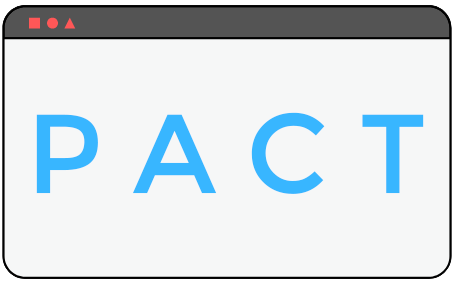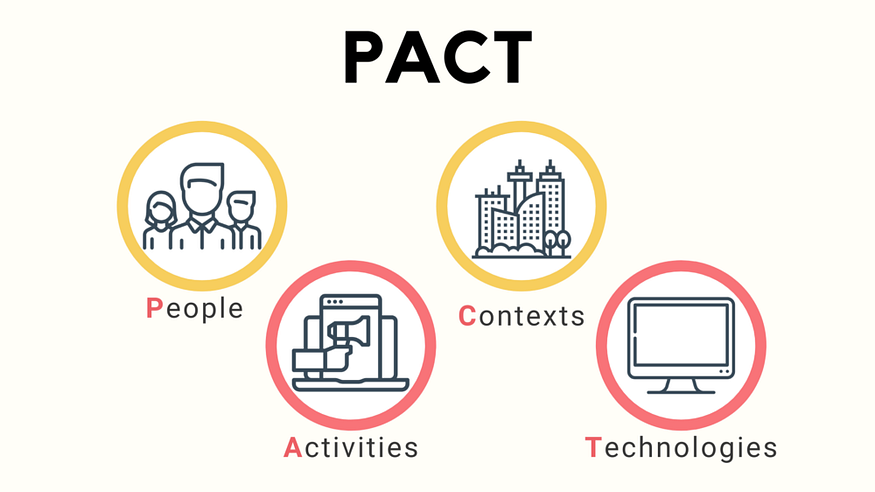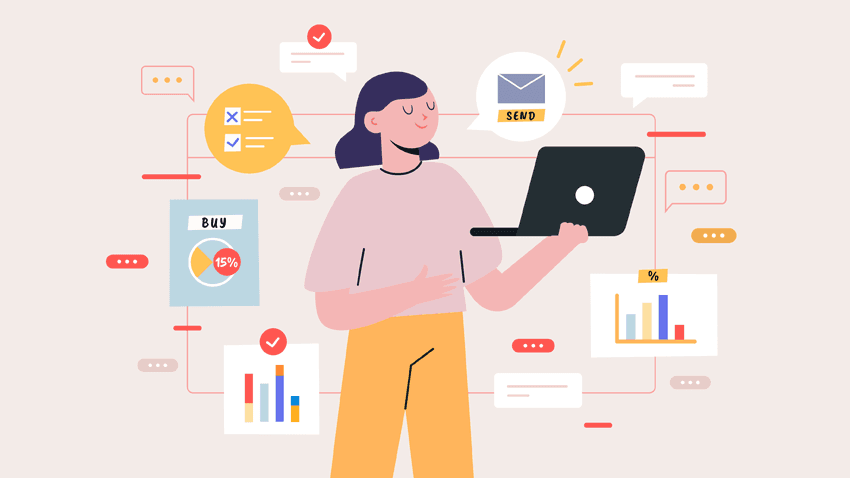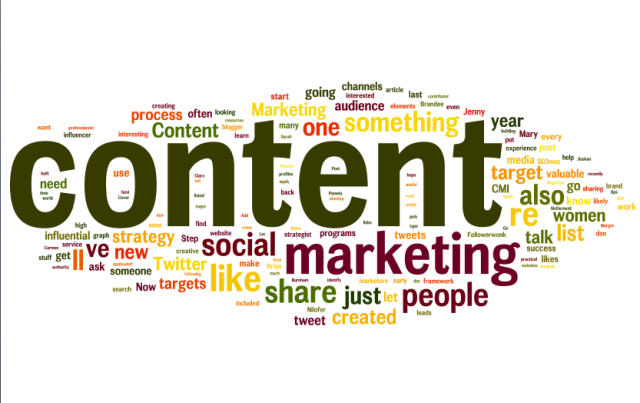PACT Analysis | CPE123 Week 3

What is PACT Analysis?
PACT Analysis is a useful framework for thinking about human-centric views to focus on problems and user needs.
Stands for - People - Who are the users
Activities (functionality, feature) - What activities are being carried out
Context (online/on-site space) - What interaction is taking place
Technologies (computer, media, sensor, software, etc.) - What technologies are used
Step - 1. 'User-centric' framework for thinking about design thinking
2. Take into each PACT category and work through it
3. People first, human-centered
4. Use the analysis to help focus early design thinking
5. Revisit the analysis (important) to find a solution that fits the user
People
Interact directly person - those who manage direct users, get feedback, purchasing, use competitor products
3 User categories - 1. Primary - frequent hands-on
2. Secondary - occasional or via someone
3. Tertiary - influence its purchase
Variability - Physiologically (age, physical activities, etc.)
- Psychologically (Attention, perception, memory, etc.)
- Socially and culturally
Capabilities - Dimensions
- Hands size (affect the buttons)
- Motor abilities (affect the suitability of input/output devices)
- Height (if designing physical kiosk)
- Others (Ex. Strength, Abilities)
Activities
Overall purpose - must be satisfied
- Hedonic vs. Pragmatic
Temporal aspect - Regular or Infrequent
- Time pressure
- Continuous or Interruptions
- Processing time
- Level of arousal
- Emotion
- Processing time
Cooperation - One or More user
Complexity - Clear or Vague
Safety critical - Number of impacts of the error
Nature of content - Type of process data
- Type of media
Context + Content Space
Physical context - Noise, Light, Time
- In an office or On a move
Social context - Individual or group
- Computer-mediated or Social activity
- Social norms
Psychological context - Motivation, Attitudes
- Cognitive demands
- Emotion
*** For Game design theory - Funability level
- Challenge/Curious (people want to win first place)
Technology
Input - Getting data in, Getting commands, Security
- Voice, Picture, Text, etc.
Output - Video vs. Photo
- Display
Communication - Between people or Devices
- Internet
Content - What data in a system
- Content on the website
* * * * * END * * * * *





Post a Comment
0 Comments